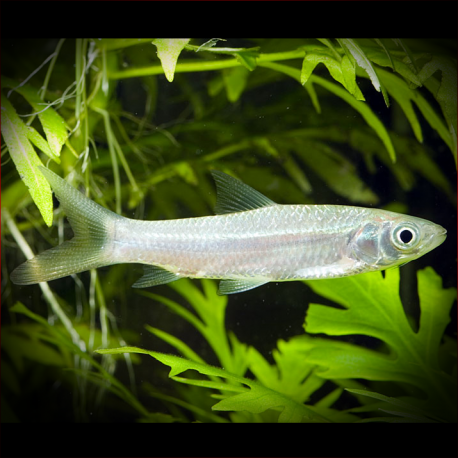More info
Datasheet
| Minimum Tank Size | 10000 litres / 2641.72 US gallons |
| Maximum Size | 100.0cm / 39.37inches |
| Temperature | 20°C / 68.00°F - 26°C / 78.80°F |
| Hardness | 2.02dgH / 36ppm - 15.02dgH / 268ppm |
| pH | 6.0-8.0 |
General Description
The Leptobarbus Hoevenii, commonly known as the Mad Barb, belongs to the Cyprinidae family under the Cypriniformes order. It is a pelagic species native to Peninsular Malaysia and the Greater Sunda Islands, primarily inhabiting rivers and larger streams. The species can grow up to 100 cm in size and requires a minimum tank size of 10,000 liters for captivity.
Aquarium Setup
When setting up an aquarium for the Leptobarbus Hoevenii, it is crucial to prioritize water quality and open swimming space over decor. Recommended tank conditions include a flowing river simulation with varying substrate sizes of rocks and gravel, large water-worn boulders, and driftwood branches. Maintaining spotless water, high oxygen levels, and adequate water movement is essential for the well-being of the fish.
Behaviour
The Mad Barb is generally peaceful in nature, but due to its small size, it is susceptible to being preyed upon by larger fish in the aquarium environment.
Feeding and Diet
In the wild, the Mad Barb feeds on plant matter, zooplankton, and various aquatic and terrestrial invertebrates. In captivity, it readily accepts a diet consisting of small live and frozen foods like bloodworms, Daphnia, Artemia, as well as quality dried foods and vegetable matter. Vegetables like peas, courgette, spinach, and fruits can also be included in its diet.
Reproduction & Dimorphism
As of now, the Mad Barb has not been successfully bred in aquarium settings, but large-scale breeding using hormones is practiced in Sumatra. Sexually mature females of the species are distinguishable by their deeper bodies compared to males.
Habitat and Distribution
The Leptobarbus Hoevenii is native to rivers and streams in Peninsular Malaysia, Borneo, Sumatra, and Java. During the rainy season, it migrates into temporarily-inundated floodplains and forests for spawning purposes.

